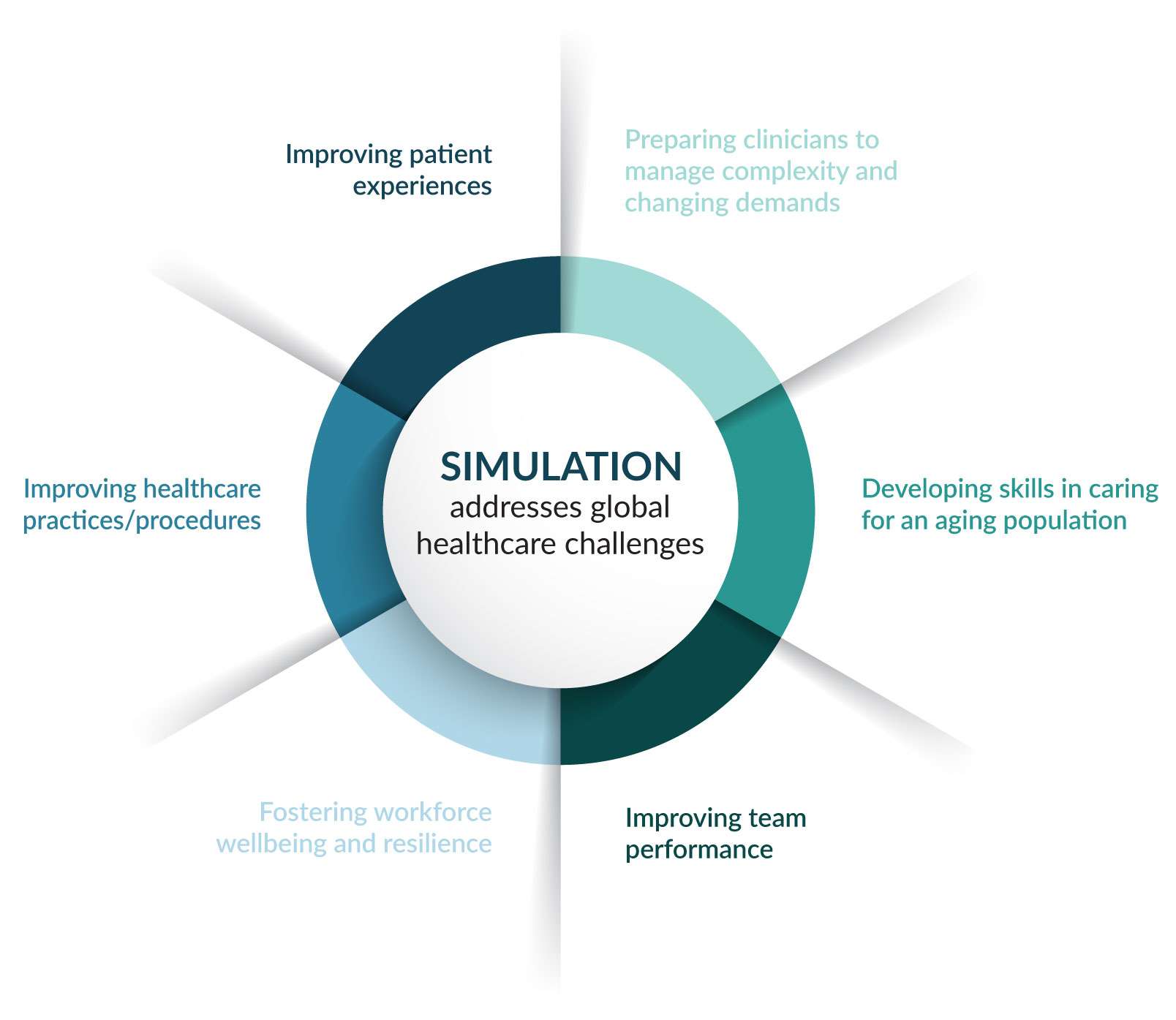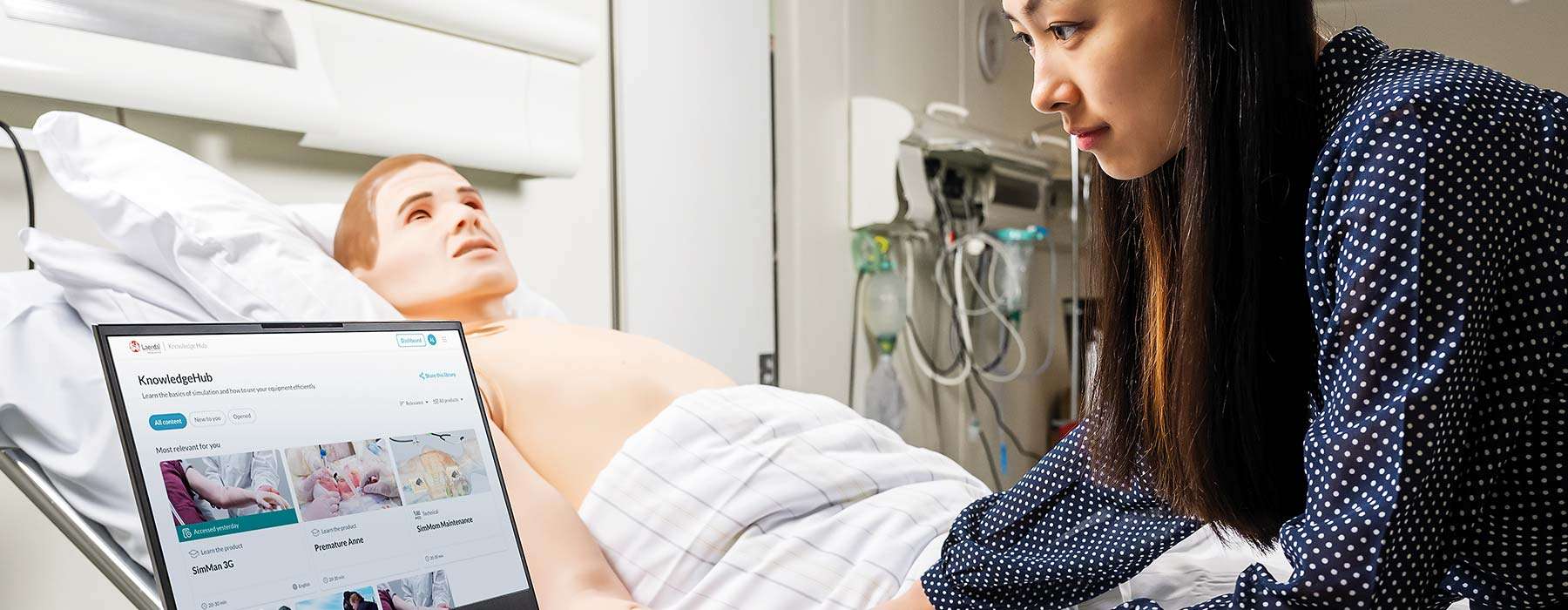Highlights From the Global Consensus Statement on Simulation-Based Practice in Healthcare
3 Key Takeaways

3 Key Takeaways

In this article, we provide 3 highlights from the 2024 Global Consensus Statement on Simulation-Based Practice in Healthcare. We also provide some tips that may help you embrace the recommendations made in the Statement.
In May 2024, the Society for Simulation in Healthcare (SSH) and the Society for Simulation in Europe (SESAM) released an important document: the Global Consensus Statement on Simulation-Based Practice in Healthcare. This collaboration encompassed experts from 50 simulation societies throughout 67 countries.
The Consensus Statement aims to offer a global view on the current scope of simulation-based practice and gain consensus on future directions.1
Barry Issenberg, MD, FSSH, Director, Gordon Center for Simulation and Innovation in Medical Education, Professor of Medical Education |Senior Associate Dean, Continuing Medical Education and Research in Medical Education, University of Miami, Miller School of Medicine

The Consensus Statement will serve as a “North Star” that will guide partner simulation organizations, higher education programs, healthcare organizations, governmental and foundational groups, and the public.3

The Statement reinforces the well-known importance of simulation as an indispensable training method that should be integrated into daily learning and practice throughout caregivers’ careers.
Simulation provides clinicians opportunities to learn, rehearse, and strengthen the capabilities they need to provide optimal care. This includes conducting simple procedures to handling rare, life-threatening emergencies. It fosters the development of patient-centered communication skills, situational awareness, decision-making, teamwork, leadership, and other critical behaviors, the Statement adds.
But the Statement also emphasizes that simulation’s benefits reach beyond education and training. Simulation can make a major impact on protecting patient safety at the systems level, too.
Global Consensus Statement on Simulation-Based Practice in Healthcare
"There has been an exponential integration of simulation approaches into quality improvement and patient safety efforts within healthcare teams, departments, and organizations," the Statement says.
By using simulation for activities such as device, process, and system testing as well as system integration, organizations can ensure that any risks are identified and addressed before touching a patient.
Our tip: Running in situ simulations – or simulations occurring in the real environment – can help you optimize your healthcare system. In situ simulations allow clinicians to practice in their actual workplace, with their own equipment. This can help uncover many latent safety threats — or “accidents waiting to happen” — in areas including teamwork and communication, knowledge gaps, medication safety, and protocol inefficiencies, to name a few.

The Consensus Statement identifies a long list of challenges in healthcare that exist across the world. And, it states that simulation can help address many of these challenges.

The Statement doesn’t explore the full list of challenges in depth. But it’s important to note that simulation can also address many of the other global challenges on the Statement’s list, including:
1
Inadequate skills in interruption management.
This can be addressed with new VR simulation technology that challenges learners to prioritize patients and manage interruptions in a realistic setting.
2
Malpractice and error-related litigations.
Simulation has been shown to reduce medical malpractice rates for OB/GYNs.4
3
Preparing new healthcare professionals for the reality of their working life.
Using simulation as part of new nurse onboarding program has been shown to increase competency and confidence while reducing turnover.5
4
Maternal-perinatal morbidity.
Hands-on, realistic practice through simulation can help learners be prepared for critical obstetric emergencies. New advances in obstetric simulation are making it easier to facilitate these types of scenarios.
5
“Blame and shame” culture.
Encouraging and fostering a shared safety culture mindset in simulation can help eliminate “blame and shame” feedback – both from learning and from operational culture, according to the Statement.
Our tip: We covered a lot of healthcare challenges in this section. Depending on your role, maybe some of them resonate with you more than others. However, one common factor that will be key in using simulation to effectively address many of these areas is data. Your simulations will yield valuable data on learner performance. A simulation management system can help you organize this data into actionable insights to help you adjust your teaching strategies, fuel your quality improvement goals, or demonstrate ROI.

The Statement emphasizes that for simulation to effectively maximize learning outcomes and system improvement, it needs to be quality-assured.
The Statement also advises that simulation should be conducted ethically. A list of ethical considerations that are of importance to the global healthcare community are presented. These considerations, the Statement explains, can help ensure integrity, respect, empathy, and compassion in simulation. Some of the considerations include:
Our tip: From mastering simulation equipment to learning best practices in evaluation, ethics, and debriefing, it takes a lot to run a high-quality simulation program. This means that offering plentiful opportunities for professional development is crucial to success. To accommodate varying learning styles and preferences, you may want to consider offering your simulation staff several forms of professional development. This could include a combination of face-to-face and virtual courses, simulation conferences like the SUN, and self-directed eLearning that allows staff to take control of their own competency development.

If you’re in healthcare system or educational institution, the Consensus Statement is calling you to action through specific recommendations:
Healthcare systems and education institutions: the time is now to make a commitment to the goal of high-quality healthcare and improved patient outcomes. This means embracing and supporting simulation initiatives for individuals and teams throughout their careers.
Simulationists: Keep championing simulation as “an indispensable learning tool.” Embrace standards of best practice, including personal integrity and ethical behavior. Be committed to lifelong learning and continue in your advocacy of enhancing patient safety through simulation.
The full Global Consensus Statement on Simulation-Based Practice in Healthcare is available here from Simulation in Healthcare.

Laerdal’s mission is Helping Save Lives – and it’s our goal to help save one million more lives, every year, by 2030. Our vision is that no one should die or be disabled unnecessarily during birth, from sudden illness, trauma, or medical errors.
You’re at the heart of our mission, goal, and vision. We strive to help you maximize the impact of your simulation initiatives by empowering you with the tools you need to optimize learning outcomes and prepare your learners to provide safe, effective care for every patient.
Wherever you are on your simulation journey, Laerdal can help you reach your goals.
Registrera dig för e-postuppdateringar från Laerdal Medical. Du kan ange dina intressen och få nytt utbildningsinnehåll, uppdateringar, information om evenemang med mera.